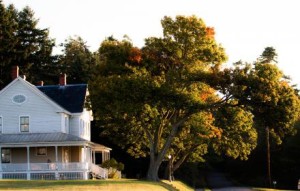Your Home Could be Warmer or Cooler Depending on What Kind of Plant Cover You Grow
 Your first consideration when choosing landscaping and garden plants is likely aesthetics. You want a beautiful arrangement that showcases your home and provides a beautiful outdoor living space. For many homeowners, though, what kind of plant they choose to include in their garden or landscaping may also include other factors.
Your first consideration when choosing landscaping and garden plants is likely aesthetics. You want a beautiful arrangement that showcases your home and provides a beautiful outdoor living space. For many homeowners, though, what kind of plant they choose to include in their garden or landscaping may also include other factors.
Deciding what kind of plant to install for energy efficiency may also be something you want to consider and often depends on your unique needs and situation. Here are a number of ways you can reduce your utility bills and beautify your yard:
Provide shade for your air conditioner. If you live in a particularly hot and humid climate, your air conditioner works hard. It’s a good idea to plant some shade around the unit, but be careful that it’s not a variety that will get tangled up in your fan or cause it to not be able to pull in air. Regularly check on your air conditioner to be sure that your vegetation is providing shade, but the unit is clear from all plant debris.
Shield dark areas from the sun. If you have an asphalt driveway or patio area, you may want to consider planting some shade for the area. Your asphalt soaks up and gives off a lot of heat, which permeates the air around it, making it harder to keep your house cool. Give your air conditioner a break and plant some shade trees around your asphalt driveway.
Windbreaks shield your house. A line of trees or shrubs can give your house a beautiful, natural border that also offers protection from the wind. If you live in a particularly windy area, or if winters are cold, this is a good way to reduce the impact on your heating bill. A natural border is a great way to incorporate form and function into your landscaping.
Shade your walls and windows, too. When looking for what kind of plant to use for shading your walls and windows in a hot climate, try a trellised vine. You can choose from annual vines, some of which can cover a trellis by mid to late summer, or you can choose a perennial variety that will provide coverage year after year. You’ll want to be careful that your perennial variety doesn’t shield your house from welcome sun warmth in the winter, though.
Protecting your home from the influence of the weather provides you with a more comfortable home both in summer and winter. It may also significantly reduce your utility bills and give you the satisfaction that you’re taking steps to care for the earth.
Need a way to identify those weather-proofing landscape and garden plants? Invest in Kincaid Plant Markers, which provide an attractive and high quality way to label the varieties of plants in your yard. Take a look at our timeless plant markers, which beautifully label your plants year after year.
